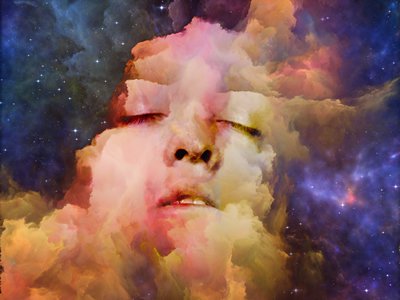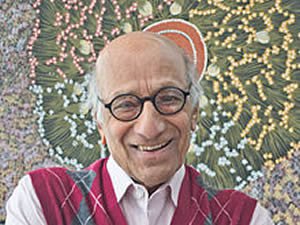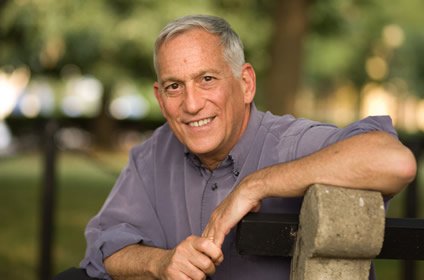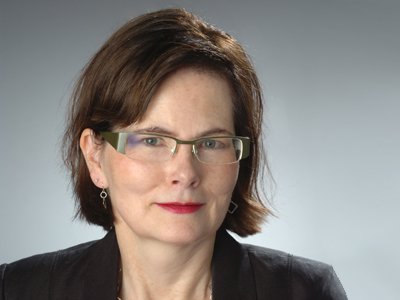Mapping the Heavens: Faculty Research in the Humanities (Part II)
Scholars debate complicated relationship between science, humanities

Since the College of Arts and Sciences (A&S) opened its doors in 1871, the humanities have been the bedrock of a Syracuse education. Contemporary conceptions of the humanities are not too different from those of yesteryear, as they espouse a holistic system of inquiry into human values. What has changed, however, is how the humanities relate to or distinguish themselves from other fields, namely science, technology, engineering and mathematics (STEM). This debate—centuries old—has profoundly impacted research, scholarship and creative work, sometimes calling into question the position of the humanities themselves.
Alan Lightman knows this apparent tension all too well. A distinguished physicist and novelist, he was the first person at the Massachusetts Institute of Technology (MIT) to receive a joint appointment in the sciences and humanities. Among his many books and essays is “The Accidental Universe: The World You Thought You Knew” (Vintage Books, 2014), exploring the emotional and philosophical terrain of scientific discovery.

During an email exchange, Lightman riffs on the importance of coursework that incorporates STEM and the humanities in fundamental ways. “I recognize the synergies and sympathies of the sciences and humanities,” says the former Harvard researcher, now a professor of the practice of the humanities at MIT. “There are many rich connections between the sciences and the humanities, and we should encourage interdisciplinary courses and activities that draw on both areas. At the same time, it is important for the academy to continue to teach them as separate disciplines, each with its own intellectual tools, methodologies and concepts. Great strides in either area often come when practitioners from one area enter the other with new tools and new points of view.”
He undoubtedly would applaud the efforts of Kameshwar C. Wali, also a theoretical physicist with a foot in the humanities. Since joining the A&S faculty in 1969, Wali has founded several interdisciplinary speaker series, including University Lectures. Last fall marked the 10th anniversary of the Kameshwar C. Wali Lecture in the Sciences and Humanities, created in his honor by Cathryn Newton, then dean of A&S, and his daughters Alaka, Achala and Monona. The headliner was Priyamvada Natarajan, an internationally renowned physicist at Yale. Natarajan’s standing-room-only talk drew from her 2016 bestseller, “Mapping the Heavens: Radical Scientific Ideas That Reveal the Cosmos” (Yale University Press).
“The Wali Lecture has evolved into an annual tradition at Syracuse,” says Vivian May, whose Humanities Center partners with the Department of Physics as a co-sponsor. “In addition to her scholarly contributions as a theoretical astrophysicist, Dr. Natarajan has a keen ability for sharing abstract discoveries with wider publics. She also is a tireless advocate for justice in the academy, especially where issues of parity and equality for women in the sciences are concerned.”
Natarajan’s visit is in keeping with the series’ roster of blue-ribbon speakers: evolutionist Lynn Margulis, naturalist Diane Ackerman, journalist George Packer and neurobiologist Carla Shatz, to name a few. “All of them are luminaries who view the scientific process through a humanistic lens,” May says.

During a meeting in his book-lined office in the Physics Building, the 90-year-old Wali waxes poetic about interdisciplinary scholarship. “Scientific research is at an intellectual crossroads,” says Wali, a fellow of the American Physical Society, who has held faculty appointments at Harvard, Northwestern and the University of Chicago. “It is imperative for scientists and humanists to understand one another for the betterment of society.”
Wali then champions an idea popularized by Lightman and other public intellectuals—that artists and humanists approach problems differently than scientists. Whereas scientists focus on questions with clear, definite answers, artists and humanists tend to concentrate on the questions themselves. The more vexing and unanswerable, the better.
“Some of the most interesting questions, such as the existence of God, are impossible to answer via scientific objectivity [the concept that theories, laws and experimental data are not tainted by social or ethical values, dogmas or individual biases],” says Wali, who is working on a book manuscript about the 20th-century radical humanist M.N. Roy. “Humanists, on the other hand, are interested in things that create social value, such as ideas and emotions. I propose a melding of the two. I think we can use science to understand the humanities and vice versa.”
Likewise, Wali’s daughter Alaka, curator of North American anthropology at the Field Museum in Chicago, encourages people to listen across the disciplines. “When we do this, we learn how to think about what we already know in a different way,” she says. “This opens us up to new ideas, and takes us down new paths for exploration. It behooves all of us to better understand scientific approaches, their social context and their limits.”
Science and the humanities arguably share an uneasy alliance. There are probably as many theories for this schism as there are researchers. Some attribute it to the rise of organized religion. A classic example occurred nearly 400 years ago, when the Roman Catholic Church convicted Galileo of heresy for proclaiming the Earth revolved around the sun. Of course, his vision was nothing new. Galileo was simply drawing on centuries of pre-telescopic research into planetary motion, stretching back to Ancient Greece.
“Organized religion, especially Christianity, was fearful of how scientists such as Galileo and Copernicus [who proposed heliocentrism in 1543] threatened religious teaching,” Alaka Wali says. “Scientific method, with its insistence on finding the governing laws of natural phenomena, questioned religious explanation and religious authority. This opposition first occurred in the physical sciences, but later, as biological and social sciences adopted the scientific method, they also came under scrutiny.”
Of course, not all humanists oppose science, and many scientists consider themselves religious, spiritual or philosophical. “Sometimes the ‘split’ is not as severe as it is made out to be. The humanities contextualize science as a deeply human endeavor, with all the benefits and dangers that it holds,” Alaka adds.

It is likely Galileo took a page out of Leonardo da Vinci’s Renaissance playbook. A brilliant artist, scientist and inventor, Leonardo stood astride the intersection of the arts and sciences. He also was unusually curious. Small wonder that his painting “Mona Lisa,” with her famous, enigmatic smile, continues to puzzle scholars and critics. In a recent piece in The Atlantic, author Walter Isaacson reveals how Leonardo went to incredible lengths—dissecting human faces, delineating the muscles that move the lips and combining that knowledge with the science of how the retina processes perceptions—to pioneer the concept of virtual reality.
“The [painting’s] smile came not from divine intervention,” writes Isaacson, a Tulane professor who is president and CEO of The Aspen Institute and author of the bestselling “Leonardo da Vinci” (Simon & Schuster, 2017). “Instead, it was the product of years of painstaking and studied human effort, involving applied science, as well as artistic skill. Using his technical and anatomical knowledge, Leonardo generated the optical impressions that made possible this brilliant display of virtuosity. In doing so, he showed how the most profound examples of creativity come from embracing both the arts and sciences.”

Isaacson recalls how Leonardo once publicly expounded on why painting was the most exalted of all art forms. Leonardo's argument was that painters did more than depict reality—they augmented it, combining observation with imagination. “It is a distillation of Leonardo’s accumulated wisdom about the outward manifestations of our inner lives and about the connections between ourselves and our world,” Isaacson writes. “Like [Leonardo’s] ‘Vitruvian Man’ standing in the square of the Earth and the circle of the heavens, Lisa sitting on her balcony is Leonardo’s profound meditation on what it means to be human.”
Sascha Scott also ponders what it means to be human. A specialist in 19th- and 20th-century art, she studies representations of American Indians, as well as the intersection of art, politics and the environment. Her work in A&S involves collaborating with indigenous communities, particularly Pueblo peoples in New Mexico, to redefine the ethics and ethos of art history.
For instance, during the early 1900s, many Pueblo artists created objects for outsider markets that their descendants have since tried to conceal. In deciding what paintings to write about, Scott consults with the artists’ communities and relatives, asking their permission to study specific objects and then soliciting feedback.
This approach stems from Scott’s ongoing work with tribal communities and her background in anthropology, a field that has long wrestled with the ethics of research and writing about indigenous cultures. “Art history has been slower to question these kinds of issues,” she says. “Consultation helps me avoid working on sensitive materials, while also leading to a polyphonic narrative about the cultural and political issues at play.”
Not all scholars favor this approach, claiming they have the right to exercise discretion within academic norms. Scott demurs. “Indigenous people and culture have been researched and analyzed far too long without regard for the perils and real benefits of this research. To decolonize art history, we must not continue down this path,” she adds.
Complicating Scott’s work, and international research in general, is cultural bias. Just like gender bias, cultural bias assumes everyone in a racial, ethnic or national group behaves identically. This type of stereotyping not only contributes to a misdiagnosis, but also has serious implications for the people studied. “No two worldviews are the same—knower to knower, scientist to scientist, humanist to humanist,” Vivian May says. “For instance, many indigenous models of science and inquiry focus on the natural world and issues of interdependence—quite different from Western science. This raises issues about what is ‘scientific’ and who counts as a scientist.”

In an attempt to make humanistic research as diverse and inclusive as possible, University Professor Dympna Callaghan recently oversaw the creation of A&S’ first academic strategic plan. For nearly two years, she chaired three working groups that formulated a swath of findings and recommendations. Their detailed reports also formed the basis of a much wider discussion about the strategic planning process as a whole.
Callaghan calls the plan a “living, breathing document,” setting a course for the college while building on its foundational strengths. “I was excited by the opportunity to help create a plan via a process of intensive dialogue and collaboration with all the constituencies across the college,” says Callaghan, also the William L. Safire Professor of Modern Letters. “The planning process allowed us to determine that the college is defined by research and research-driven teaching, [the latter of] which encapsulates the twin commitments of faculty to first-order, internationally recognized research as the driver of our pedagogy and outstanding student achievement.”
To some, a scholar of 16th- and 17th-century English literature may seem an unlikely choice to formulate a strategic plan, but Callaghan has made believers out of her skeptics. She laments those who fail to see the humanities as an important part of a university education. “This is nothing new,” says Callaghan, pointing out that, some 620 years ago, the University of Paris condemned some areas of study as illegitimate, dangerous or useless. “Knowledge that seems ‘relevant’ at any given moment is potentially time-bound and present-focused, whereas teaching and learning that has an eye to the future—where our students’ careers will be—is much less rigid about the subjects that help give them the skills they need to succeed.”
When asked about her vision for the future of the humanities here at Syracuse, Callaghan quotes Helmut Schmidt, the former West German chancellor, who famously said, “Wer eine Vision hat, der soll zum Arzt gehen,” a phrase meaning “Whoever has a vision should go to a doctor.” She concludes: “Visions, products of the imagination, are, of course, my stock in trade as a literary scholar, but a ‘vision’ without a plan isn’t very useful. You need both to get direction for the future, and I believe the working groups for the college strategic plan succeeded in combining both.”
Featured
Dympna Callaghan William Safire Professor of Modern Letters and University Professor
